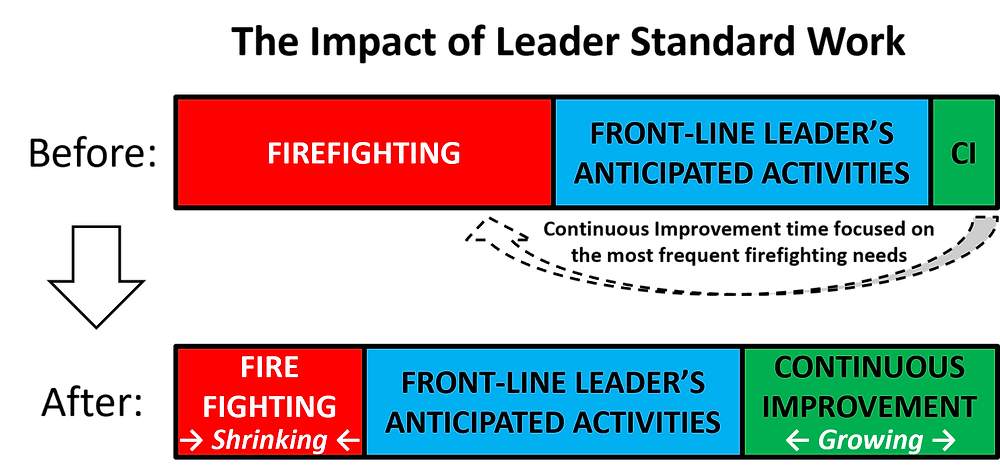The Shift: From Reactive to Proactive
A Story of Burnout and Recovery
We decided to intervene with a series of coaching sessions. Our objective was to help this leader build a sustainable leadership routine. The steps we followed were practical, simple, and effective.
We asked him to track his activities over a few days:
-
What was he doing?
-
When did he do it?
-
How long did it take?
-
Why was he doing it?
Step 2: Ask the Right Questions
-
What tasks can be eliminated?
-
What can be simplified?
-
What can be delegated?
-
What can be moved to a better time?
-
What can be combined?
Step 3: Reinforce with Standard Work
That paper was his oxygen mask.
This kind of burnout is not rare. Across industries, I’ve seen five recurring causes:
-
Unstable Processes: Leaders spend energy managing variability, missing materials, unclear instructions, and equipment breakdowns.
-
Poor Visual Controls: Without visual cues, problems stay hidden until they explode.
-
Lack of Team-Based Problem Solving: If teams cannot solve problems, everything escalates to the leader.
-
Unclear Expectations: When roles and responsibilities are vague, leaders are stuck filling gaps.
-
No Escalation System: Without a system for triaging problems, leaders treat every issue like an emergency.
The alternative to burnout is not just better time management. It’s building a leadership system. I call it the flywheel:
Each cycle creates more space for the next improvement. Leaders stop putting out fires and start preventing them.
You do not need a six-month initiative to start this journey. Begin with one recurring frustration. Ask:
-
Why does this keep happening?
-
Who needs to be involved to fix it?
-
What standard or visual could prevent it?
Normalize the Norm
-
Starting and ending the day on time
-
Leading standard processes with confidence
-
Coaching and supporting learning
-
Creating space to anticipate and improve
Five Practical Tools to Support the Shift
-
Daily Time Tracker. Track activities, start/end times, and purpose. Reflect on patterns.
-
Eliminate-Simplify-Delegate Framework: Review your task list and ask:
-
Can this be eliminated?
-
Can it be simplified?
-
Can it be delegated?
-
Can it be combined?
-
-
Create Leader Standard Work
-
Check-ins
-
Visual reviews
-
Problem-solving
-
Coaching
-
Improvement time
-
-
Escalation Pathway. Clarify when and how issues are escalated. Build tiered response systems that support decision-making.
-
Daily Coaching Habit. Ask one question each day:
-
What’s the biggest issue right now?
-
What support do you need?
-
What can we improve today?
-
Final Thought: Leadership Is a System, Not a Heroic Act
If you are stuck in firefighting mode, you are not failing. You are operating inside a system that needs redesign. You can fix that system. You can build a structure. You can coach instead of chase. You can breathe.
Put on your leadership oxygen mask. Then help others do the same.



Comments